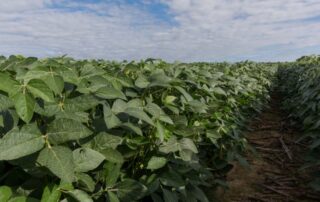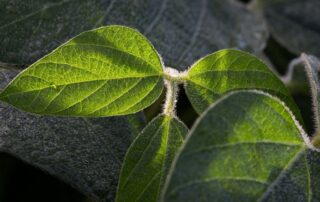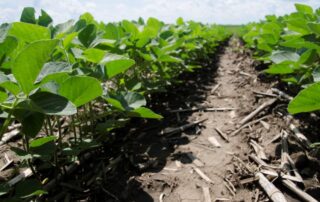Target-Site vs. Non-Target-Site Resistance: What’s the Difference?
This article was originally posted on Take Action. Weed scientist identifies two types of herbicide resistance farmers should watch for. Herbicide resistance is an evolutionary process – one that began decades ago and grows each season. With new discoveries in herbicide resistance becoming more complex, the weed-control battle proves to be a never-ending uphill climb for U.S. soybean farmers. But as resistant weeds continue to evolve, ongoing research provides a better understanding of the challenges presented in the types of herbicide resistance we face—target-site resistance and non-target-site resistance—and which control mechanisms will work for each moving forward. Target-Site Resistance [...]
Has the Cool, Wet Weather This Spring Affected Soybean Nodulation?
It takes 4 to 5 pounds of nitrogen to produce a bushel of soybeans. For example, a 70 bushel-per-acre soybean crop requires about 300 pounds per acre of nitrogen for stover and grain production. Of this, approximately 75 percent is removed with the grain harvest. Soybeans actually require more nitrogen than corn—a fact that is often overlooked or not addressed. Much of soybeans’ nitrogen needs are met by soil bacterium Bradyrhizobium japonicum, often referred to as rhizobia, in a process known as nitrogen fixation through nodulation of soybean roots. Although this symbiotic relationship provides a significant amount of nitrogen [...]
Combating SCN: Weakening of PI 88788 Resistance
Overreliance on PI 88788 as the major source of genetic resistance has weakened its effectiveness as soybean cyst nematode (SCN) populations continue to evolve. SCN is the the single largest biotic stress to soybeans in Illinois. The North Central Soybean Research Program (NCSRP) estimates disease losses in Illinois and suggests that soybean producers in the state lose 18 to 20 million bushels annually to this pest. Growers know the strategies to combat SCN are primarily rotation and genetic resistance. Today there are a few seed treatments, such as VOLTiVO (+ IleVO) and Clarvia, that help. But unfortunately the genetic [...]





 and then
and then